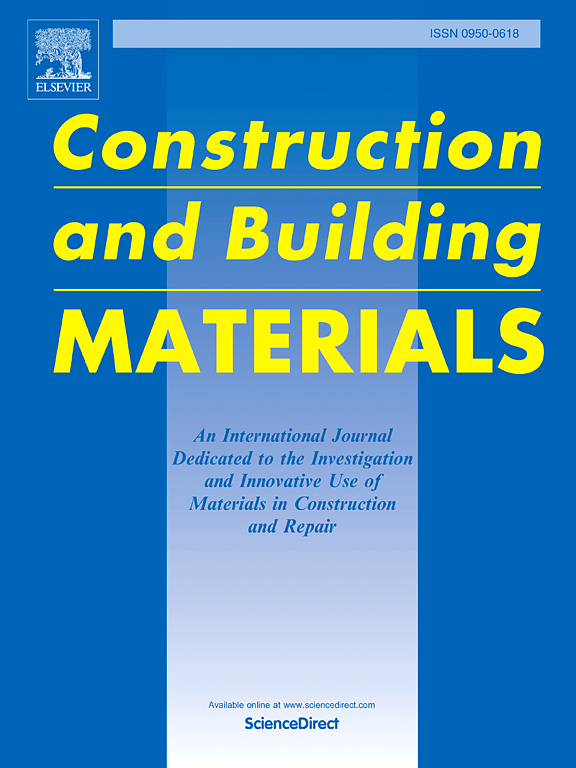Experimental evaluation of the transfer and development length of 28.6 mm diameter grade 1780 strands in normal strength concrete
IF 8
1区 工程技术
Q1 CONSTRUCTION & BUILDING TECHNOLOGY
引用次数: 0
Abstract
This research experimentally addresses the determination of the required transfer and development length of beams reinforced with 19-wire 28.6 mm diameter, grade 1780, prestressing steel strands, which contain 5.4 times more area than typical 13 mm diameter strands. Eight (8) full-scale beam specimens were constructed to evaluate the influence of different concrete compressive strengths on transfer and development length of these large-diameter strands with the overarching goal of determining whether they could be used in precast concrete applications. Demountable Mechanical (DEMEC) gauges were used to gather surface strain readings, which were further analyzed using the 95 % of the Average Maximum Strain (AMS) method to obtain the transfer lengths. Development length testing was performed by loading the beams until failure at locations between the theoretical development length and the experimental transfer length to obtain the experimental development length values. The tests conducted in this research suggest that beams reinforced with these strands would have transfer lengths between 22 and 52 strand diameters, and development lengths would likely be in the range of 60–120 strand diameters for concrete strengths between 45 and 65 MPa.
直径28.6 mm级1780股在正常强度混凝土中传递发展长度的试验评价
本研究通过实验解决了19丝直径28.6 mm、等级1780预应力钢绞线加固梁所需的传递和发展长度的确定问题,这种钢绞线的面积是典型直径13 mm钢绞线的5.4倍。构建了八(8)个全尺寸梁试件,以评估不同混凝土抗压强度对这些大直径股的传递和发展长度的影响,其总体目标是确定它们是否可以用于预制混凝土应用。使用可拆卸机械(DEMEC)计收集表面应变读数,并使用95% %的平均最大应变(AMS)方法进一步分析以获得传递长度。展开长度试验是通过在理论展开长度和实验转移长度之间的位置对梁进行加载直到破坏,从而获得实验展开长度值。本研究中进行的试验表明,用这些钢绞线加固的梁的传递长度在22至52股钢绞线直径之间,混凝土强度在45至65 MPa之间时,发展长度可能在60-120 股钢绞线直径范围内。
本文章由计算机程序翻译,如有差异,请以英文原文为准。
求助全文
约1分钟内获得全文
求助全文
来源期刊

Construction and Building Materials
工程技术-材料科学:综合
CiteScore
13.80
自引率
21.60%
发文量
3632
审稿时长
82 days
期刊介绍:
Construction and Building Materials offers an international platform for sharing innovative and original research and development in the realm of construction and building materials, along with their practical applications in new projects and repair practices. The journal publishes a diverse array of pioneering research and application papers, detailing laboratory investigations and, to a limited extent, numerical analyses or reports on full-scale projects. Multi-part papers are discouraged.
Additionally, Construction and Building Materials features comprehensive case studies and insightful review articles that contribute to new insights in the field. Our focus is on papers related to construction materials, excluding those on structural engineering, geotechnics, and unbound highway layers. Covered materials and technologies encompass cement, concrete reinforcement, bricks and mortars, additives, corrosion technology, ceramics, timber, steel, polymers, glass fibers, recycled materials, bamboo, rammed earth, non-conventional building materials, bituminous materials, and applications in railway materials.
 求助内容:
求助内容: 应助结果提醒方式:
应助结果提醒方式:


